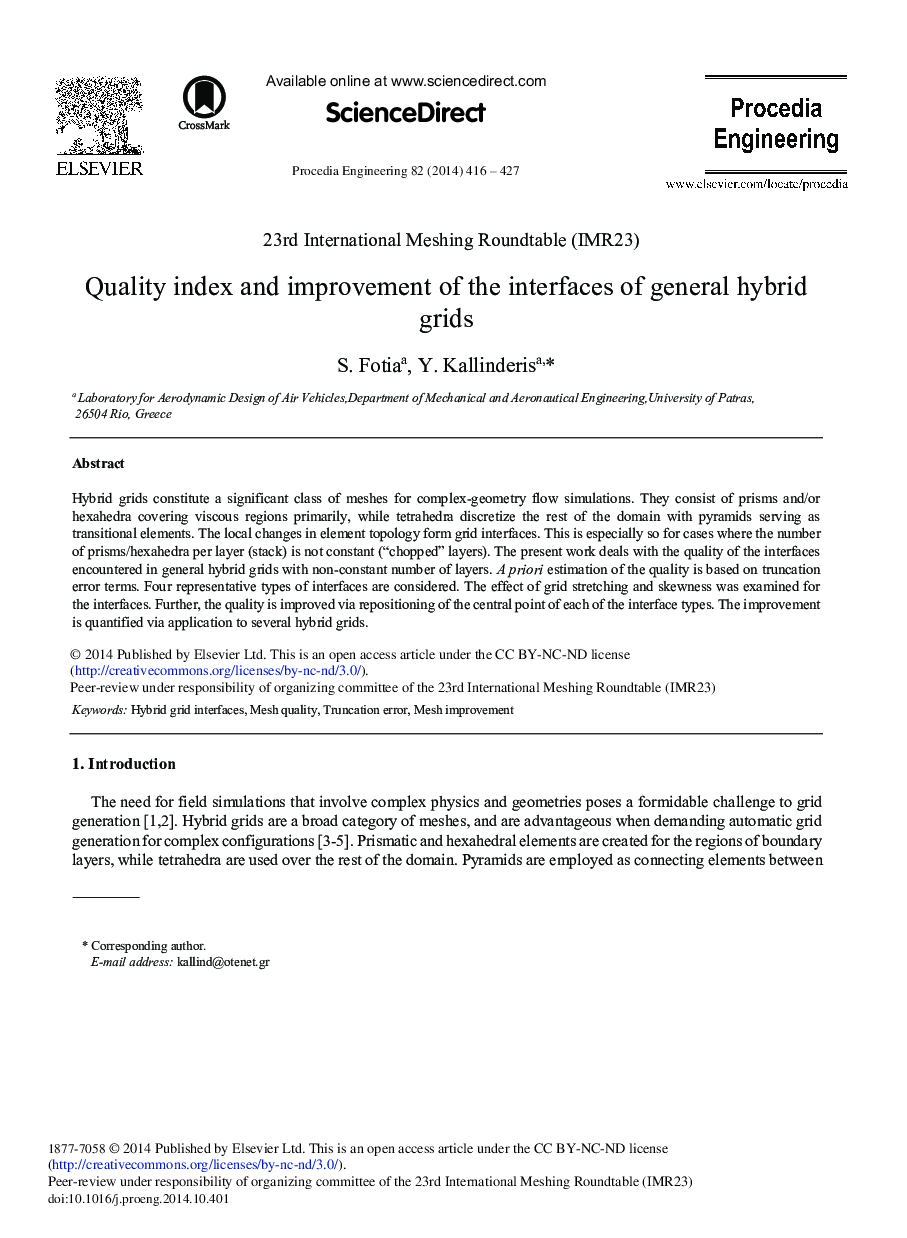| Article ID | Journal | Published Year | Pages | File Type |
|---|---|---|---|---|
| 857844 | Procedia Engineering | 2014 | 12 Pages |
Hybrid grids constitute a significant class of meshes for complex-geometry flow simulations. They consist of prisms and/or hexahedra covering viscous regions primarily, while tetrahedra discretize the rest of the domain with pyramids serving as transitional elements. The local changes in element topology form grid interfaces. This is especially so for cases where the number of prisms/hexahedra per layer (stack) is not constant (“chopped” layers). The present work deals with the quality of the interfaces encountered in general hybrid grids with non-constant number of layers. A priori estimation of the quality is based on truncation error terms. Four representative types of interfaces are considered. The effect of grid stretching and skewness was examined for the interfaces. Further, the quality is improved via repositioning of the central point of each of the interface types. The improvement is quantified via application to several hybrid grids.
